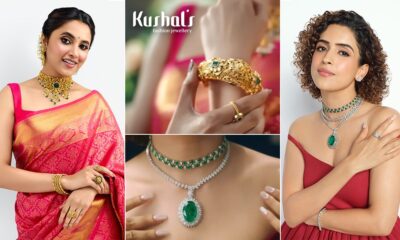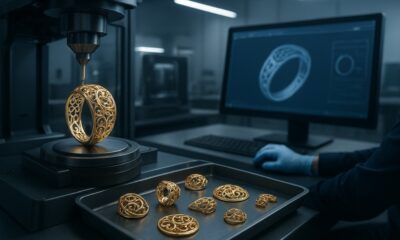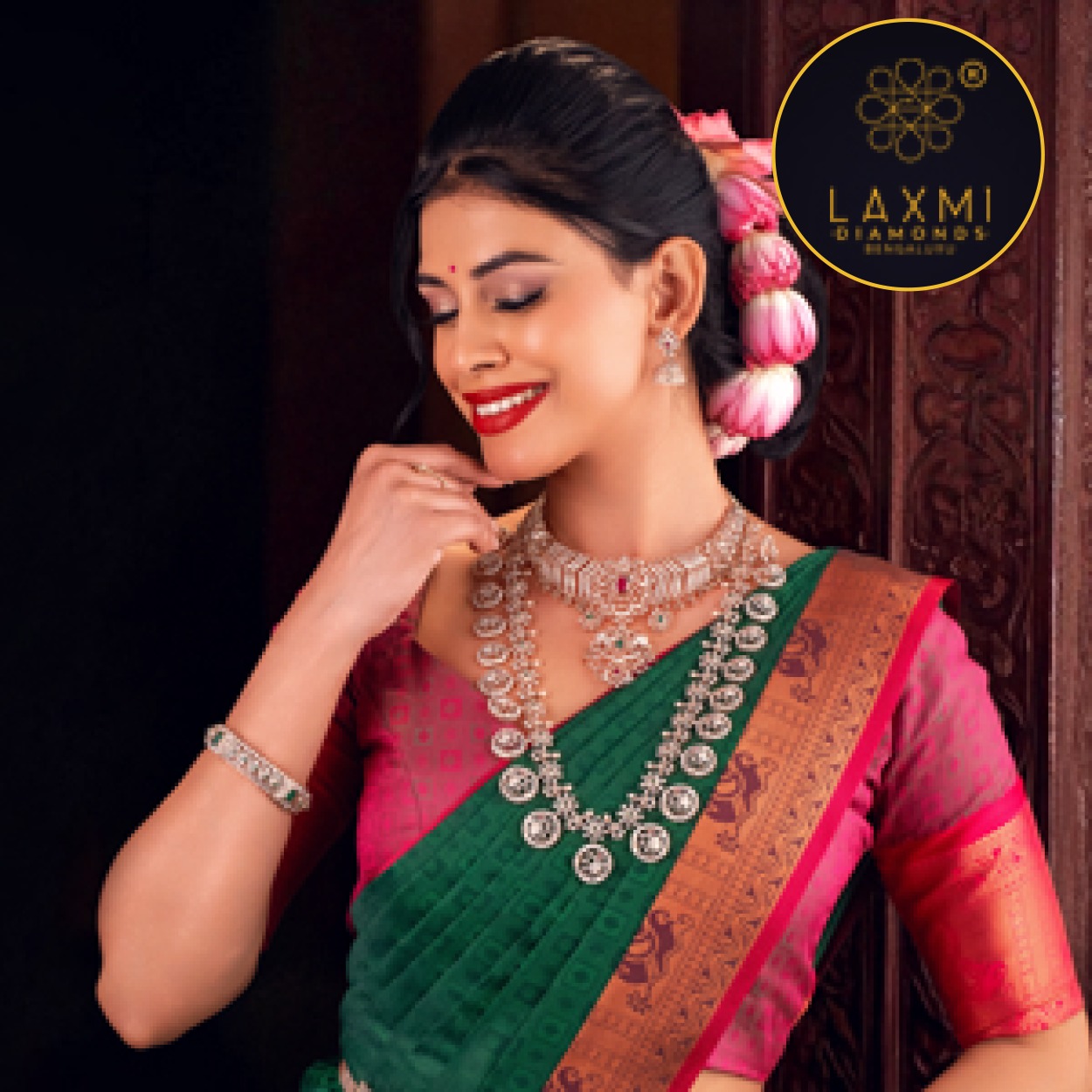By Invitation
Insights into the Gold & Bullion market
Over the past two years, gold prices have been underpinned by strong physical demand from China and central banks. However, investor flow, and specifically retail-focused ETF building, resident- its easing cycle on September 18, the Fed projected 50 basis points of rate reduction by year's end and a full percentage point of decreases the following year.

During times of global instability and low interest rates, gold is typically favoured as an
investment. The U.S. presidential election on November 5th may possibly lead to a further
increase in gold prices, as investors may seek safe-haven assets due to possible volatility in
the markets.
Global Factors Impacting the Gold Rally
Gold has been the best-performing asset class in 2024, rising around 30% in international
markets and 22% in domestic markets with prices surpassing the $2700/oz (~ Rs 76400)
mark. The global central banks’ ongoing gold purchases, the US Federal Reserve’s rate cuts,
the geopolitical unpredictability of the world’s markets, the slowdown in the Chinese
economy, and the recent monetary stimulus measures taken by the Chinese central banks
are all responsible for the strong performance.
1) Central Bank Buying
This year’s central bank gold demand is probably being influenced by the gold price
increase, but the long-term pattern of net purchasing is still in place. Total gold holdings
added by central banks around the world from January to July is around 520 tonnes. Turkey,
India and Poland have been the top buyers, while the Philippines and Thailand are the net
sellers.

2) FED rate cut cycle
Even if inflation is still high, gold is still in a favourable position as the Federal Reserve
cuts interest rates to support a contracting labour market. After a 50-bps rate cut and a
warning that rates may drop to 3% by 2026. It’s evident that the Fed is relaxing, which is
good news for yellow metal. With central banks all over the globe starting to lower
interest rates, gold is still the primary hedge against currency devaluation on a
worldwide scale.

3) Gold CFTC positioning
Due to the ongoing rate-cut cycle by the Federal Reserve, geopolitical worries in the Middle
East, and expectations of increased festival demand in India, investors are still building long
positions in gold. U.S. traders have lately entered the speculative phase headed by China,
with futures long holdings at a nearly four-year high (315,000 contracts), producing a
market that is mostly unaffected by normal drivers.

4) ETF Holdings
Four months in a row, there have been inflows into global gold ETFs: all regions had positive
flows, with Western funds leading the way. The y-t-d losses for global gold ETFs further
decreased to $1bn as a result of nonstop inflows between May and August. Additionally, the
2024 holdings reduction has been reduced to 44t. In the meantime, during the first eight
months of 2024, the total AUM increased by 20%. Asia has seen the most inflows this year
($3.5 billion), while the leading outflows are from North America (-$1.5 billion) and Europe
(-$3.4 billion)

5) Dollar index
The Dollar Index has slipped below the highly crucial psychological milestone of the 100
mark as the US Dollar’s role as the major global reserve currency is being threatened. The
combination of better risk sentiment and lowered Fed rate expectations is fundamentally
unfavourable. Since gold doesn’t generate interest, cuts in interest rates contribute to a
declining value of the US dollar, which in turn makes the non-yielding metal more appealing.
The dollar index’s negative relationship with gold keeps the yellow metal maintained at high
levels.

6) Gold Silver ratio
The gold-silver ratio dropped to its lowest levels since July during the last week of
September, when gold started to approach $2700 and silver momentarily overtook a 10-
year high of over $33. At this point, the gold-to-silver ratio is 84 to 1. The beginning of a
silver rally that would see white metal surpass its more costly counterpart would be
confirmed by a sustained decline in the gold-silver ratio.

Domestic Factors Supporting Gold
1) RBI Gold reserves
The Reserve Bank of India’s appetite for gold remains high, as indicated by its recent
acquisitions. Over the first eight months of the year, the RBI has acquired a total of 50
tonnes of gold, with acquisitions in each month. Up from 7.5% a year ago, the RBI’s gold
reserves have now reached a record 853.6 tonnes or 9% of its total foreign reserves.

2) India Gold Imports
The Union Budget’s announcement of the reduction in import duties and the modifications
to the long-term capital gains for gold ETFs has contributed to the rise in gold imports into
India. Between January and August, gold imports increased by 30% year over year to almost
485 tons, valued at US$32 billion.

3) Gold ETF Holdings
Investor interest in Indian gold ETF has surged since the end of July. According to AMFI data,
net inflows into Indian gold ETFs have reached Rs 61 billion (~$735 million) thus far in 2024,
a considerable rise of over Rs 15 billion during the same period in the previous year.
Together, these funds have added 9.5tn of gold this year, increasing their total holdings to
51.8tn, a 29% year-over-year rise.

4) Gold Premium/Discount
The gap between domestic and international gold prices has narrowed as a result of rising
global prices and increased supply from increased imports. Domestic gold prices have been
trading either at a modest discount to or in line with international prices in recent weeks,
despite the normalizing but still robust demand.

Diwali Outlook
Overall, with continued global economic uncertainty, gold is expected to retain its appeal
as a hedge against inflation and market volatility. Investors may adopt a “buy on dips”
strategy as the metal is likely to see periodic fluctuations, but the long-term outlook
remains bullish through for next 5-6 months and prices are expected to touch $3000 (~Rs
84000).
Having said that, currently gold prices are in the overbought zone, so we might see a
consolidation phase and a retracement with support at $2575 (~Rs 73000) and resistance
being the next psychological level of $2750 (~Rs 78000) in the next one month.
By Invitation
Professional Guidelines for Training Jewellery Retail Sales Staff
By Shivaram A, Founder – Retail Gurukul

Selling jewellery requires a distinct approach from other retail sectors. Customers in this environment anticipate a higher level of service and expertise than they might expect at a grocery or clothing store. To achieve success, staff must possess specialized skills tailored to jewellery sales. The following guide outlines key training principles for jewellery sales associates, complemented by practical examples for each area.
1. Appearance
• All employees should maintain impeccable grooming and attire.
• Example: Associates arrive in pressed shirts and polished shoes daily.
• Where possible, provide uniforms; otherwise, ensure personal clothing is clean, ironed, and understated.
• Example: Staff without uniforms wear plain, well-ironed garments, avoiding prominent logos.
• Hair must be neatly styled and footwear kept clean for all staff members.
• Example: Management conducts pre-shift checks to confirm proper grooming standards.
• Dress codes apply universally, including to security personnel.
• Example: Security staff participate in regular dress code reviews and grooming inspections.
2. Attitude
• Encourage staff to display consistent friendliness and positivity throughout the workday.
• Example: Every customer is welcomed with a genuine smile and warm greeting.
• Staff should maintain courteous engagement, even if customers do not reciprocate.
• Example: In cases where a customer appears upset, the associate still offers a friendly introduction and assistance.
• Staff are expected to compartmentalize personal issues during shifts, remaining constructive and solution-oriented.
• Example: Employees adopt a focused mindset before starting their shift to prioritise exemplary customer service.
3. Communication
• Employees must uphold polite, respectful dialogue at all times.
• Example: Use courteous phrases such as “May I assist you, Sir?” or “Thank you, Madam” consistently.
• Appropriate titles or respectful terms in local languages should be used when addressing clientele.
• Example: “Good afternoon, Sir. Is there something special you are searching for today?”
• Professional etiquette should permeate every interaction.
• Example: Regularly incorporating “please” and “thank you” in conversations.
• Indifference must be strictly avoided.
• Example: If an employee is occupied, they acknowledge waiting customers with assurances of prompt attention.
• Multilingual abilities are advantageous in serving a diverse customer base.
• Example: Staff transition to Hindi when necessary to make customers feel comfortable.
• Demonstrate extra patience and care with elderly patrons.
• Example: Spend time clearly outlining details for older customers who may require additional support.
• Engage children hospitably so adults can shop undistracted.
• Example: Offer small toys or converse briefly with children while adults browse.
• Ensure equal treatment for all visitors, irrespective of appearance or attire.
• Example: Give consistent attention to both casually and formally dressed customers.
4. Hospitality
• Begin interactions by welcoming guests and offering seating.
• Example: “Please have a seat while I present our newest collection.”
• Provide complimentary refreshments as a hospitality gesture.
• Example: Serve water or tea to customers as they view products.
• All team members should be prepared to assist customers, regardless of primary responsibilities.
• Example: If the primary salesperson is occupied, another employee steps in seamlessly.
• Owners should occasionally interact directly with clients to lead by example.
• Example: The owner personally thanks loyal customers for their continued patronage.
• Always offer proactive and attentive service.
• Example: Assist customers with carrying purchases or parking arrangements when needed.
5. Product Knowledge
• Deliver thorough training to ensure staff are knowledgeable about inventory.
• Example: Monthly training sessions update employees on new designs and materials.
• Define clear guidelines regarding which product details and certifications to share.
• Example: Staff are informed about certifications relevant to gold purity inquiries.
• Team members should confidently describe product features, fabrication methods, and distinctive qualities.
• Example: Discuss differences between handcrafted pieces and machine-made jewellery.
• Educating customers is integral to the sales role.
• Example: Clearly explain gemstone properties or style benefits to interested shoppers.
• Counter personnel must answer queries knowledgeably or direct customers to appropriate experts.
• Example: Junior associates promptly consult senior colleagues when complex questions arise.
• New hires should discreetly seek supervisory guidance rather than stating uncertainty.• Example: “Let me verify that information with my manager to provide you with an accurate response.”
-

 GlamBuzz6 days ago
GlamBuzz6 days agoKushals Fashion and Silver Jewellery shines bright with Sanya Malhotra as its Brand Ambassador in the North and Priyanka Mohan in the South
-

 BrandBuzz1 day ago
BrandBuzz1 day agoWhen your Love Speaks its own Language, Seal it with Platinum Love Bands
-

 TechBuzz39 minutes ago
TechBuzz39 minutes agoAdditive Manufacturing in Jewellery: How 3D Printing is Shaping the Future
-

 National News7 hours ago
National News7 hours agoMaharashtra’s legacy brand Waman Hari Pethe Jewellers receives IAGES accreditation













